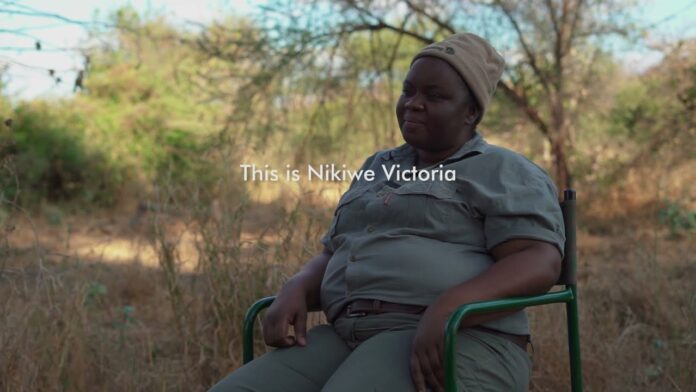Language is the foundation of human communication, and the diversity of languages across the globe is a testament to the richness and complexity of the human experience. From the remote corners of the Amazon rainforest to the bustling cities of Europe, language diversity is a vital part of our cultural heritage and a key aspect of our shared humanity.
Introduction
Language diversity is the coexistence of multiple languages within a geographical region or a particular social context. It encompasses the vast array of linguistic systems, dialects, and forms of expression that have evolved over centuries, reflecting the unique histories, traditions, and worldviews of diverse communities. This linguistic diversity is not only a fascinating aspect of human culture but also a crucial factor in understanding the evolution of language, the preservation of indigenous knowledge, and the promotion of cultural exchange.
Importance of Language Diversity

The Preservation of Cultural Identity
Language is intrinsically linked to cultural identity, serving as a medium for the transmission of traditions, beliefs, and values. Each language embodies a unique worldview, with its own nuances, metaphors, and ways of expressing concepts. The preservation of linguistic diversity is essential for maintaining the rich tapestry of human cultures, ensuring that the diverse perspectives and experiences of communities around the world are recognized and celebrated.
Promoting Intercultural Understanding
Language diversity fosters intercultural understanding and exchange. By learning about and engaging with different languages, individuals can gain deeper insights into the perspectives and lived experiences of other cultures. This exchange of knowledge and perspectives can lead to greater empathy, tolerance, and collaboration, as people from diverse backgrounds come together to share their unique stories and experiences.
Enhancing Cognitive Abilities
Numerous studies have shown that exposure to and fluency in multiple languages can have cognitive benefits, such as improved problem-solving skills, enhanced memory, and greater flexibility in thinking. Bilingual and multilingual individuals often display enhanced executive functions, which can lead to better academic and professional outcomes.
Safeguarding Indigenous Knowledge
Many of the world’s endangered languages are spoken by indigenous communities, whose traditional knowledge and ecological wisdom are often encoded within their linguistic systems. The loss of these languages can result in the irrevocable loss of valuable information about medicinal plants, sustainable farming practices, and traditional ecological management techniques. Preserving linguistic diversity is crucial for safeguarding this invaluable knowledge.
Examples of Language Diversity around the World

The Linguistic Landscape of Africa
Africa is home to an astounding linguistic diversity, with over 2,000 languages spoken across the continent. This diversity is a testament to the rich cultural heritage of African societies, with many languages reflecting the unique histories and traditions of various ethnic groups. From the click-based languages of southern Africa to the Afro-Asiatic languages of the Horn of Africa, the linguistic landscape of Africa is a kaleidoscope of human expression.
The Multilingual Mosaics of Asia
Asia is renowned for its linguistic diversity, with an estimated 2,300 languages spoken across the continent. This diversity is particularly pronounced in regions such as India, where over 19,500 dialects are spoken, and Papua New Guinea, which has the highest linguistic diversity in the world, with over 800 languages. The coexistence of these languages, often within the same geographical region, has led to the development of complex multilingual societies and the exchange of cultural traditions.
The Endangered Languages of the Americas
The indigenous languages of the Americas have been under threat for centuries due to colonization, cultural assimilation, and socioeconomic marginalization. Many of these languages, such as Quechua in South America and Navajo in North America, are now considered endangered, with only a few remaining fluent speakers. Efforts to revitalize and preserve these languages are crucial for maintaining the rich cultural heritage of native communities and safeguarding their traditional knowledge.
The Linguistic Diversity of Europe
Despite its relatively small geographical size, Europe boasts a remarkable linguistic diversity, with over 225 indigenous languages spoken across the continent. This diversity is a reflection of Europe’s complex history, with languages ranging from the Indo-European family (such as English, French, and German) to the Finno-Ugric languages (such as Finnish and Estonian) and the Basque language, which is unrelated to any other known language.
Benefits of Embracing Language Diversity
Cognitive and Academic Advantages
Numerous studies have shown that exposure to and proficiency in multiple languages can have significant cognitive and academic benefits. Bilingual and multilingual individuals often display enhanced executive functions, such as improved problem-solving skills, better attention control, and greater mental flexibility. These cognitive advantages can lead to better academic and professional outcomes, as individuals are better equipped to navigate complex problem-solving tasks and adapt to new situations.
Enhanced Intercultural Communication and Understanding
Language diversity facilitates intercultural communication and understanding, enabling individuals to engage with people from different cultural and linguistic backgrounds. By learning and using multiple languages, people can gain deeper insights into diverse perspectives, cultural nuances, and ways of thinking. This enhanced intercultural communication can foster greater empathy, tolerance, and collaboration, ultimately contributing to a more inclusive and harmonious global society.
Preservation of Cultural Heritage and Indigenous Knowledge
As mentioned earlier, many endangered languages are spoken by indigenous communities, whose traditional knowledge and ecological wisdom are often encoded within their linguistic systems. By preserving linguistic diversity, we can safeguard this invaluable knowledge, ensuring that the diverse perspectives and experiences of marginalized communities are recognized and celebrated. This preservation of cultural heritage can also lead to the development of more sustainable and ecologically-informed practices.
Economic and Diplomatic Advantages
In an increasingly globalized world, the ability to communicate in multiple languages can provide significant economic and diplomatic advantages. Multilingual individuals are often in high demand in fields such as international business, diplomacy, and tourism, where the ability to navigate linguistic and cultural barriers can be a valuable asset. Furthermore, the preservation of linguistic diversity can contribute to the development of local economies and the promotion of cultural exchange, fostering economic and diplomatic relationships between diverse communities.
Challenges of Language Diversity
Language Endangerment and Extinction
One of the most pressing challenges facing language diversity is the ongoing threat of language endangerment and extinction. Factors such as globalization, urbanization, and cultural assimilation have led to the decline of many minority and indigenous languages, with an estimated 43% of the world’s languages currently considered endangered. The loss of these languages can have devastating consequences, as it results in the irrevocable loss of cultural knowledge, traditional wisdom, and unique modes of human expression.
Linguistic Discrimination and Marginalization
Language diversity can also be accompanied by linguistic discrimination and the marginalization of minority language speakers. In many parts of the world, dominant languages are often privileged over minority languages, leading to the suppression of linguistic rights, the exclusion of minority language speakers from educational and economic opportunities, and the erosion of linguistic diversity.
Lack of Resources and Support for Minority Languages
Preserving and promoting language diversity often requires significant resources and support, which can be challenging, particularly for minority and endangered languages. Insufficient funding for language education, documentation, and revitalization initiatives can make it difficult to maintain the vitality of these linguistic systems, leading to their gradual decline.
Challenges in Language Acquisition and Education
In multilingual societies, language acquisition and education can pose unique challenges. Balancing the need for proficiency in dominant languages with the preservation of minority languages can be a delicate and complex task, requiring innovative approaches to language education and the recognition of the cognitive and cultural benefits of multilingualism.
Ways to Promote and Preserve Language Diversity
Strengthening Language Education and Immersion Programs
One of the most effective ways to promote and preserve language diversity is through the implementation of comprehensive language education and immersion programs. This can involve the inclusion of minority and endangered languages in school curricula, the development of bilingual and multilingual educational models, and the creation of immersive language learning environments that foster proficiency and cultural understanding.
Supporting Language Documentation and Revitalization Efforts
Efforts to document, preserve, and revitalize endangered languages are crucial for safeguarding linguistic diversity. This can involve the creation of language archives, the development of digital resources and tools for language learning, and the implementation of community-based language revitalization initiatives that empower local communities to maintain and transmit their linguistic heritage.
Fostering Linguistic Rights and Inclusive Policies
Promoting and preserving language diversity requires the recognition of linguistic rights and the implementation of inclusive policies that protect the linguistic rights of minority and indigenous communities. This can include the official recognition of minority languages, the provision of language-based public services, and the integration of linguistic diversity into broader social, economic, and cultural initiatives.
Encouraging Multilingualism and Cross-Cultural Exchange
Fostering a culture of multilingualism and cross-cultural exchange can contribute to the preservation of language diversity. This can involve the promotion of language learning and exchange programs, the creation of multilingual media and cultural events, and the development of platforms that facilitate the sharing of linguistic and cultural knowledge across communities.
Leveraging Technology for Language Preservation
Advances in technology, such as digital language archives, mobile applications, and online language learning resources, can be powerful tools for preserving and revitalizing endangered languages. By harnessing these technological innovations, language communities can document, teach, and transmit their linguistic heritage to future generations, ensuring the continued vitality of their linguistic diversity.
Conclusion
Language diversity is a crucial aspect of our shared human experience, reflecting the rich tapestry of cultures, traditions, and worldviews that exist across the globe. As we navigate the challenges of globalization and cultural homogenization, it is essential that we recognize the inherent value of linguistic diversity and take active steps to preserve and promote it. By strengthening language education, supporting revitalization efforts, fostering inclusive policies, and leveraging technological innovations, we can ensure that the diverse voices and perspectives that make up our global community continue to thrive and enrich our collective understanding of the world.









